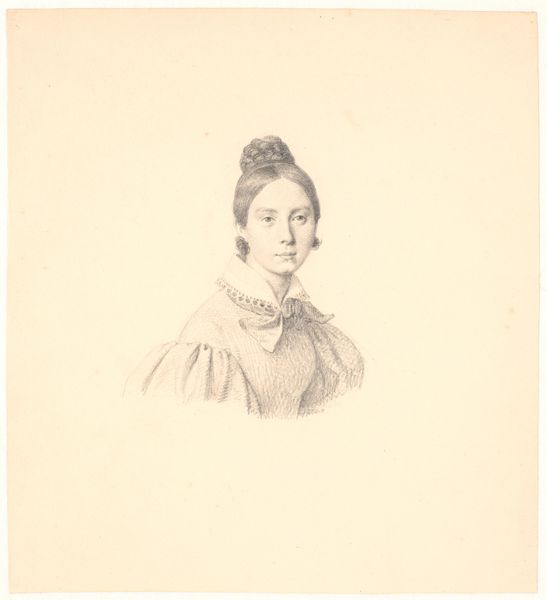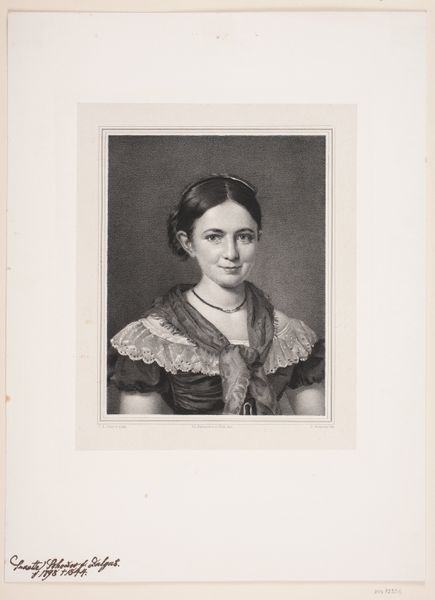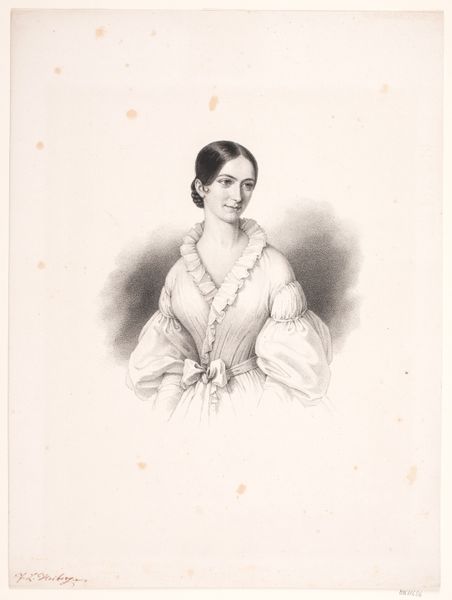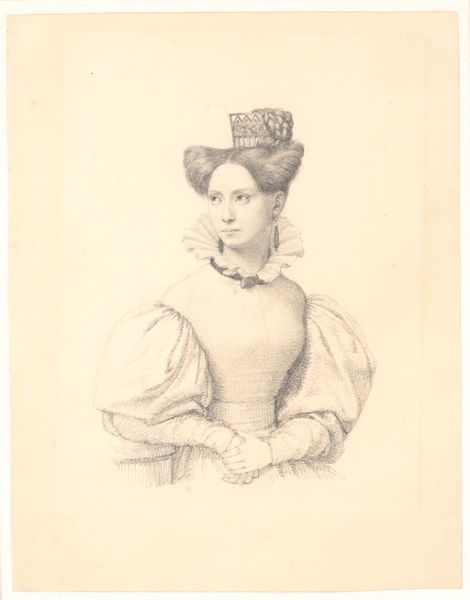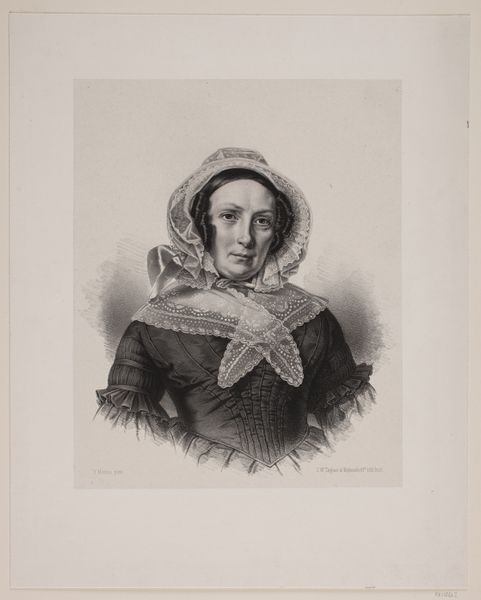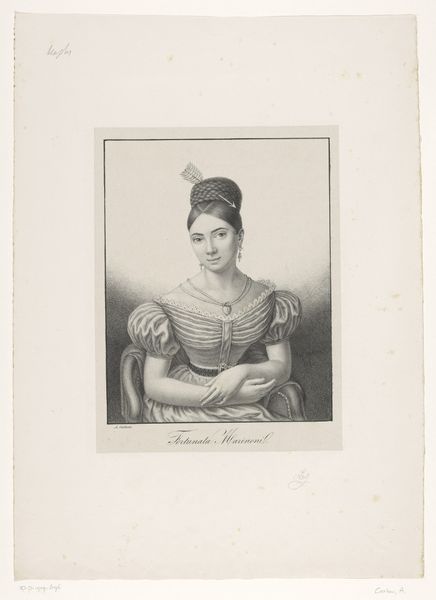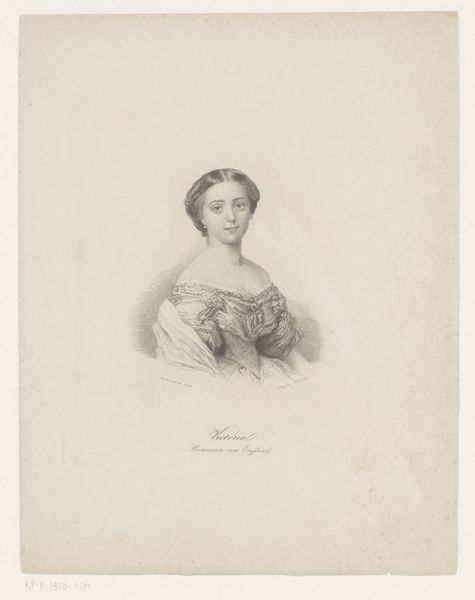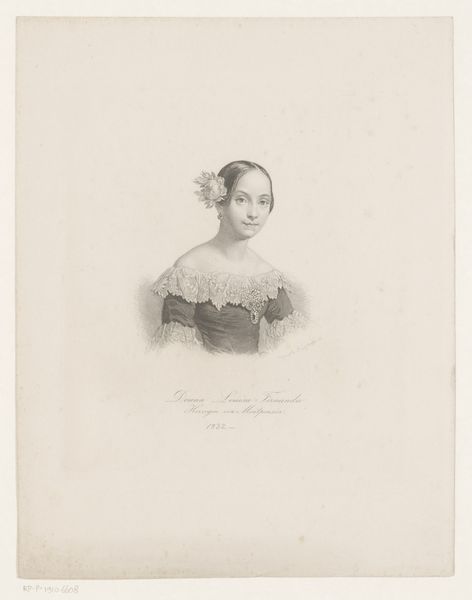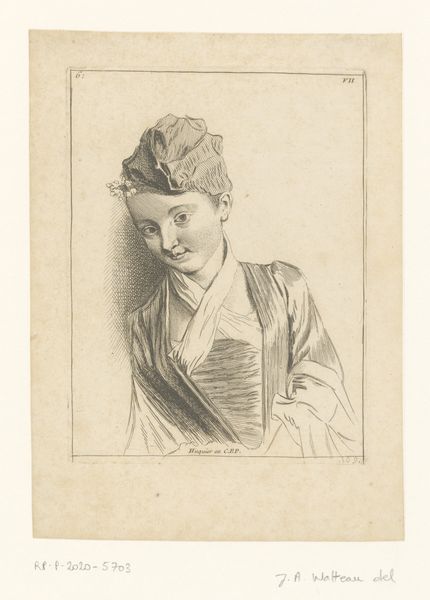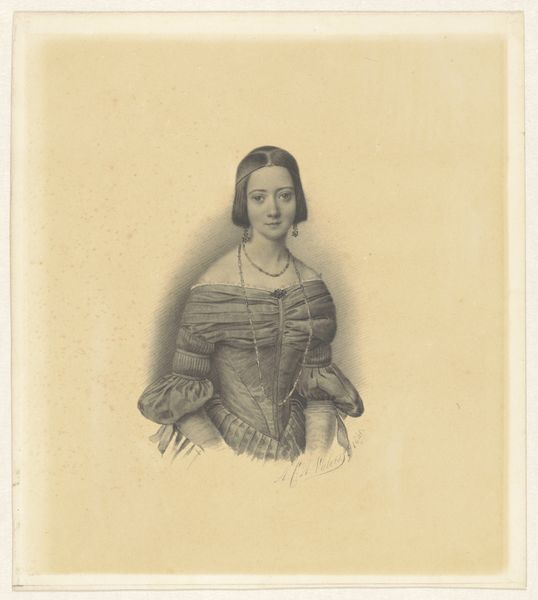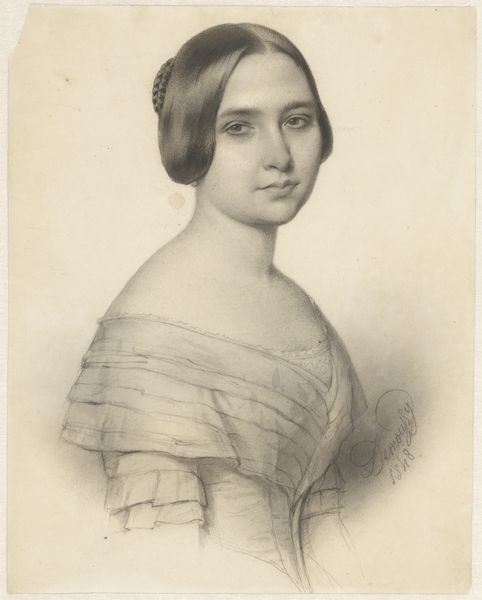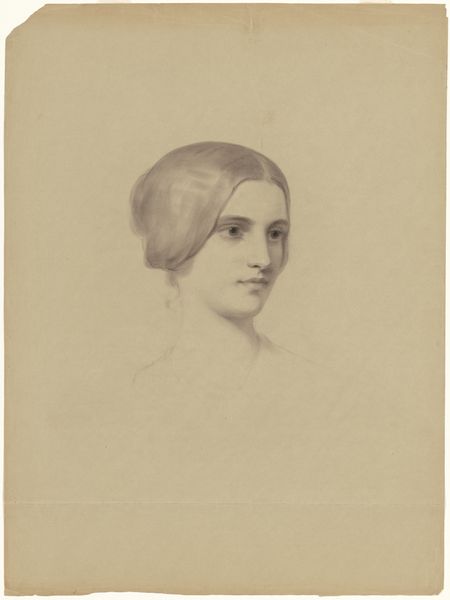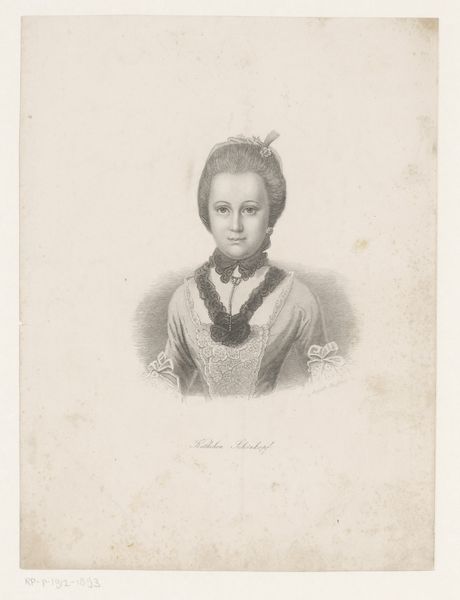
drawing, lithograph, print, pencil
#
portrait
#
pencil drawn
#
drawing
#
lithograph
# print
#
pencil drawing
#
romanticism
#
pencil
#
portrait drawing
Dimensions: 330 mm (height) x 227 mm (width) (bladmaal)
Curator: Before us hangs "Kvindehoved", which translates to "Female Head," a print dating between 1795 and 1854 attributed to N.B. Krossing. Editor: She has such a wistful, almost melancholic air about her. And look at the exquisite detail in her head covering. It’s a rather modest image, almost understated, especially for a portrait. Curator: Precisely! The artist utilized lithography and pencil, mediums that align with the Romanticism movement prevalent during this era. Romanticism embraced emotion and individualism, often in contrast to the industrial age. Editor: But it's interesting to think about how that supposed individualism often excluded women from full participation. Is she an idealized type, representing perhaps the Danish peasant woman? Is the traditional headwear here an identifier, placing her in a specific socio-economic context? Curator: Undoubtedly. Her traditional dress and headdress positions her within a specific cultural narrative, quite possibly reflecting a growing national identity in Denmark during that period. Portraits like these often served a broader function, codifying visual markers of identity. Editor: And considering this work’s availability as a print—its potential for widespread distribution complicates that story, though, doesn’t it? While it risks solidifying visual stereotypes, at the same time that broad circulation democratizes art, making representations available to a wider public that may well interpret them differently. Who gets to see themselves represented? Curator: Yes, that dissemination point raises key considerations! Furthermore, the artist's technical skill enhances her perceived virtue and beauty. It fits the social conventions and norms expected of women portrayed in this style during this period. Editor: This work operates on multiple layers: a sensitive portrayal, a possible social commentary, and a study in the politics of representation, each entangled with ideas of beauty and identity. Thank you! Curator: A pleasure. It always opens new views on historical and social values that form opinions and perceptions.
Comments
No comments
Be the first to comment and join the conversation on the ultimate creative platform.
